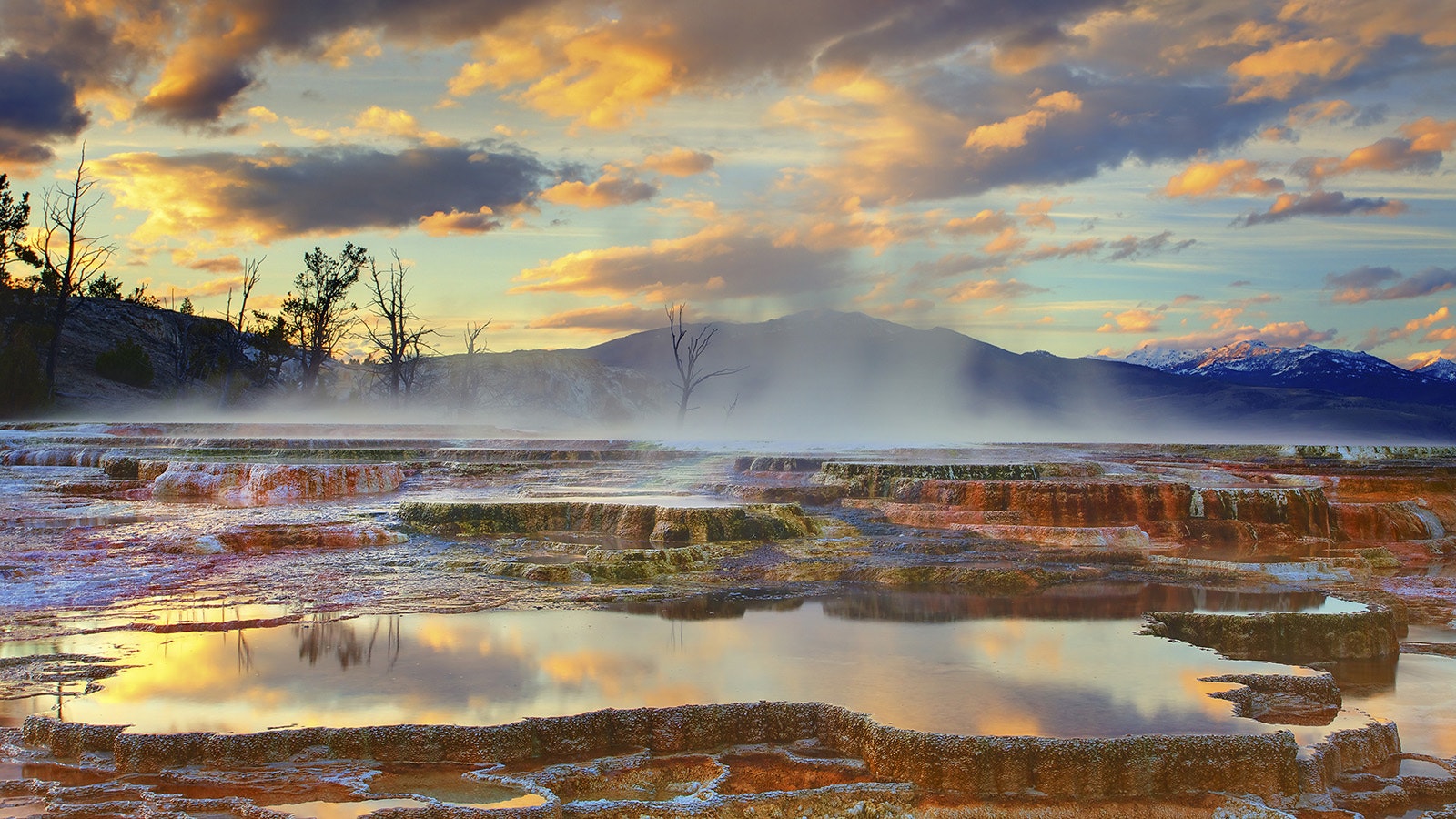Wyoming has enormous potential for geothermal energy. Unfortunately, all of it’s in Yellowstone, which means the best spot in the state to develop it is off limits.
“Wyoming is on top of a very old and cold rock, except the Yellowstone area, which is obviously very active,” Dr. Soheil Saraji, associate professor in petroleum engineering at the University of Wyoming, told Cowboy State Daily.
That means Wyoming is not the ideal location for traditional geothermal energy, Saraji said.
However, there are companies developing new geothermal technologies using hydraulic fracturing deep in the earth that could unlock the potential for the energy source.
Wyoming also has less opposition from environmental groups, which are blocking geothermal projects in Nevada.
Like A Radiator
Geothermal uses the heat from inside the earth. That heat is either used directly, such as for an industrial application, or to create steam to turn turbines.
Rob Klenner, director of geothermal technology and innovation for Baker Hughes, discussed geothermal potential at the Next Frontier Energy Summit in Cheyenne on Tuesday.
He said that the Earth’s crust is radiating 42 gigawatts of thermal power in a constant, steady stream.
Unlike other carbon-free sources of energy, such as wind and solar, geothermal isn’t intermittent. It also doesn’t take up a large amount of land.
The process, Klenner explained, involves drilling wells into deep rock and then using hydraulic fracturing to create a reservoir in a space that’s 300 to 600 degrees Fahrenheit.
Fluid is then circulated down into the heated space and brought back up to the surface.
“It’s much like using a radiator,” Klenner said.
Klenner said that by converting the heat to electricity, you’re only going to produce about 1 megawatt of electricity. That’s about the same as a single wind turbine.
Using the heat directly, he said, is much more efficient.

Bringing Down Costs
New technologies offering energy without carbon dioxide emissions get people excited well before the technology has been developed to the point it's economically viable.
The point where geothermal is competitive with fossil fuels is still a long way off.
Klenner said Baker Hughes is working with oil and gas shale companies, such as Continental Resources. These companies developed the hydraulic fracturing technologies that led to a massive growth in oil and gas production in the United States over the last 15 years.
In 2008, the cost to drill and complete a well was much higher than it is today, and companies can drill and produce profitably when oil prices are lower.
Klenner said working with these shale companies will hopefully bring the cost of geothermal down in the same way it did for oil and gas production.
“We realize we’re not going to be necessarily as cost competitive as wind and solar today, but with the help of these companies, we’re pretty confident we can bring down the cost of geothermal as well,” Klenner said.
Environmentalist Opposition
Another challenge for the geothermal industry is the environmental movement.
As with any energy industry, there are tradeoffs. Geothermal uses hydraulic fracturing, which many environmental organizations oppose.
Were the geothermal industry to grow to a greater level of visibility, it’s likely the opposition from environmentalists would grow. Already projects are being blocked.
Reason Magazine reported last month that Ormat spent 15 years exploring the feasibility of a 12-megawatt geothermal plant in Nevada.
The project came to a screeching halt when the federal government last year listed the Dixie Valley toad as endangered. The plant is indefinitely on hold.
Last month, Washoe County commissioners revoked Ormat’s permit to drill exploratory wells for another geothermal project north of Reno, Nevada.
The Associated Press reported that officials of the countercultural Burning Man festival filed a lawsuit in U.S. District court to block the companies exploratory activities, arguing it would jeopardize the area’s water supply and impact the natural beauty of the area.
The group cheered the county commission’s decision.
Discussions
Wyoming is typically safer from such opposition, and so the geothermal industry might find a friendly environment in the Cowboy State.
Saraji said that, as far as he is aware, there are no active geothermal projects in Wyoming.
He said he is in discussions with companies to partner with the University of Wyoming for a pilot project to test some of these ideas.
“Whether or not it’s going to work, it’s still too early to say,” Saraji said.





